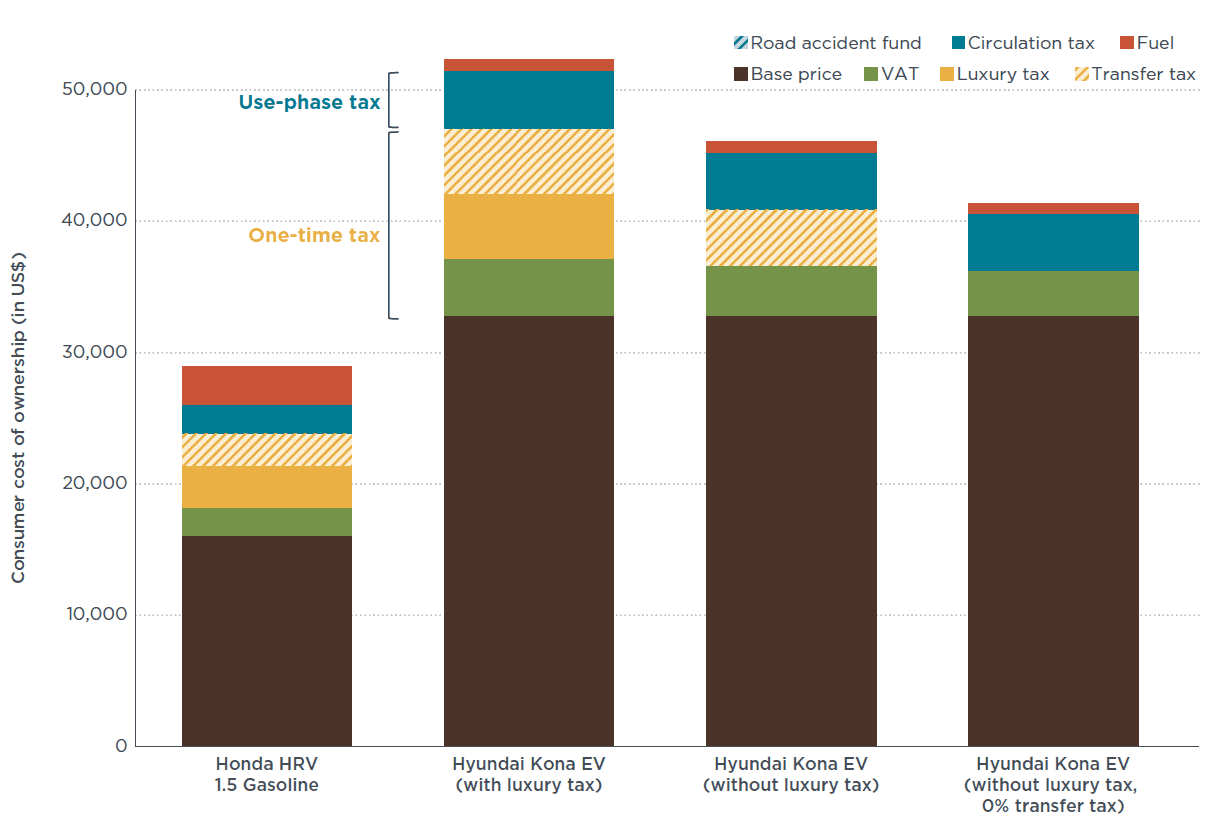Working Paper
The consumer cost of ownership of electric passenger cars in Indonesia
The electric vehicle (EV) market in Indonesia is still at an early stage in its development, in part because the high cost of EVs deters potential buyers. While purchase price is often cited as a key obstacle to EV adoption, it is only one of many cost items that consumers consider in a vehicle purchase. Understanding the broad cost structure of EV ownership, known as the consumer cost of ownership (CCO), can help to identify solutions for overcoming cost hurdles to EV adoption.
This study compares a broad set of ownership costs of two comparable passenger vehicles: the most popular EV model by sales, the Hyundai Kona EV, and a similar ICE model, the Honda HR-V, both classified as SUV-Bs. We calculated the vehicle price, including various taxes and fuel and electricity costs for 6 years of ownership. For the EV calculation, we applied 3 different scenarios, (i) EV with luxury tax and transfer tax, (ii) EV without luxury tax, and (iii) EV without luxury tax and transfer tax.
The main findings are as follows:
- Cost parity between the Honda HR-V and the Hyundai Kona EV cannot be achieved within 6 years of ownership, even under current tax incentives, and even if the luxury tax and transfer tax are 0%.
- The saving in fuel costs from the Hyundai Kona EV does not provide a significant reduction in terms of the consumer cost of ownership.
- The base price difference between the two vehicles is larger than the total tax applied to the Hyundai Kona EV, which highlights the need for more incentives for EVs.
- Differences between showroom and base prices plus taxes reflect the different profit and commercial pricing decisions by manufacturers, which we are not evaluating in this paper.
Regarding policy, we recommend that the government:
- Introduce a feebate program and structure it based on fuel consumption or CO2 emission levels. A strong tax must be levied for vehicles whose fuel consumption is above the average; fiscal rebates can be given to the most efficient models, with the highest incentive given only for zero-emission vehicles.
- Introduce electricity fare reduction and time of day (TOD) pricing schemes. This can be implemented for both public charging and home charging. TOD can reduce the energy cost if the EVs are charged during off-peak hours when electricity prices are low.
- Adopt a VAT exemption for EVs, especially in the early phase. The VAT exemption can be phased out as the EV market matures.
- Provide scrapping incentives to reduce the high upfront cost of EVs. Indonesia has not yet adopted an official scrapping incentive policy. The scrapping incentive implemented in other countries has proven to be effective in spurring the penetration of EVs.
- Require carbon taxes on fuel, especially since the Indonesian government began to impose carbon taxes in April 2022 on coal-fired power plants. A carbon tax linked to fuel price may discourage ICE use and promote the use of cleaner vehicles, including EVs.
- Give an EV parking benefit to EV users. This can be offered by municipal or city governments. This can be in the form of free municipal paid parking zones. Jakarta, the capital of Indonesia, has integrated a vehicle registration database with the municipal parking system; thus implementation of such a policy could be done relatively soon.
- Reduce toll fares or provide preferential access to road infrastructure to lower the consumer cost of ownership, especially for commuters who commute via toll roads daily.

Figure. Consumer cost of ownership calculations for three vehicle models under different EV tax and incentive schemes
